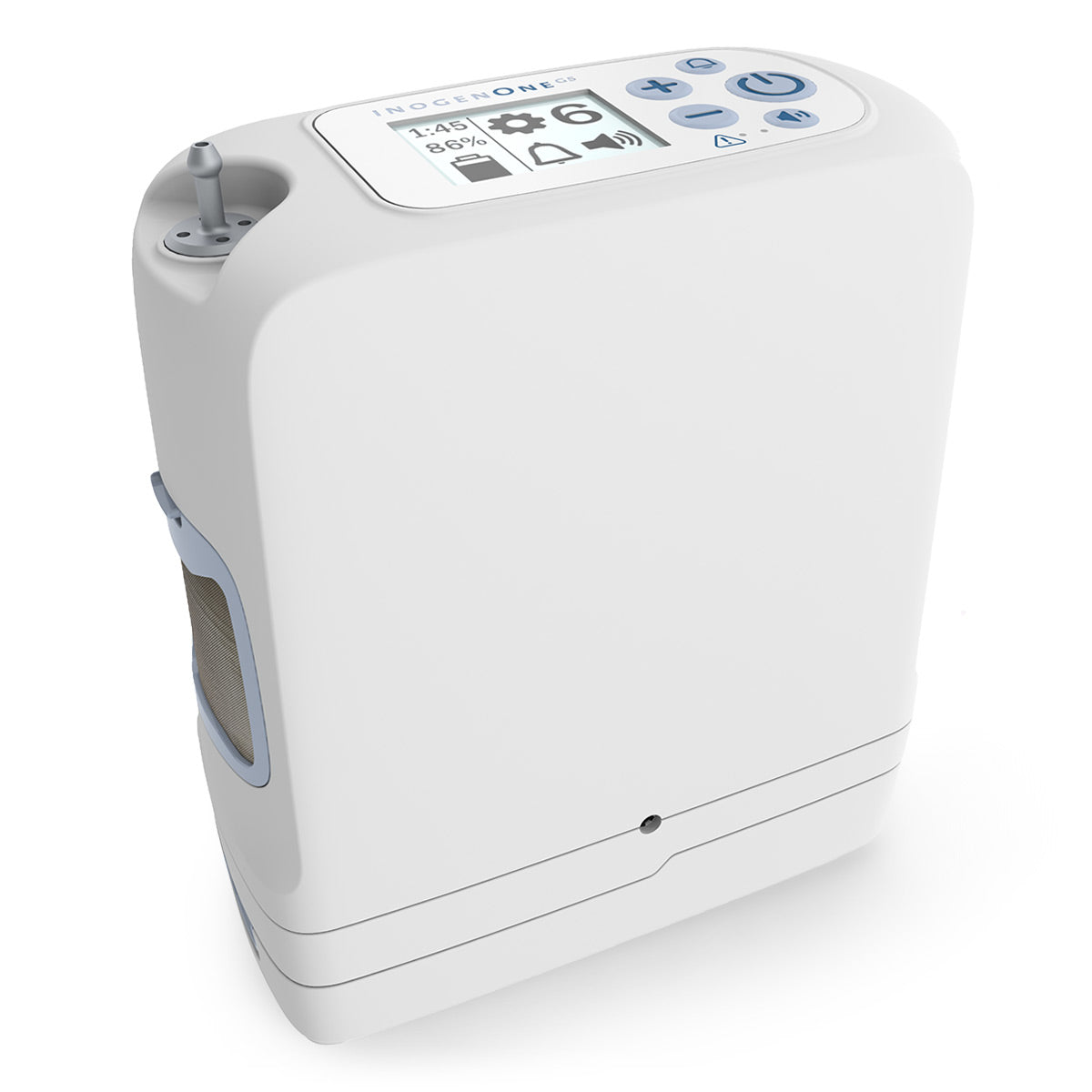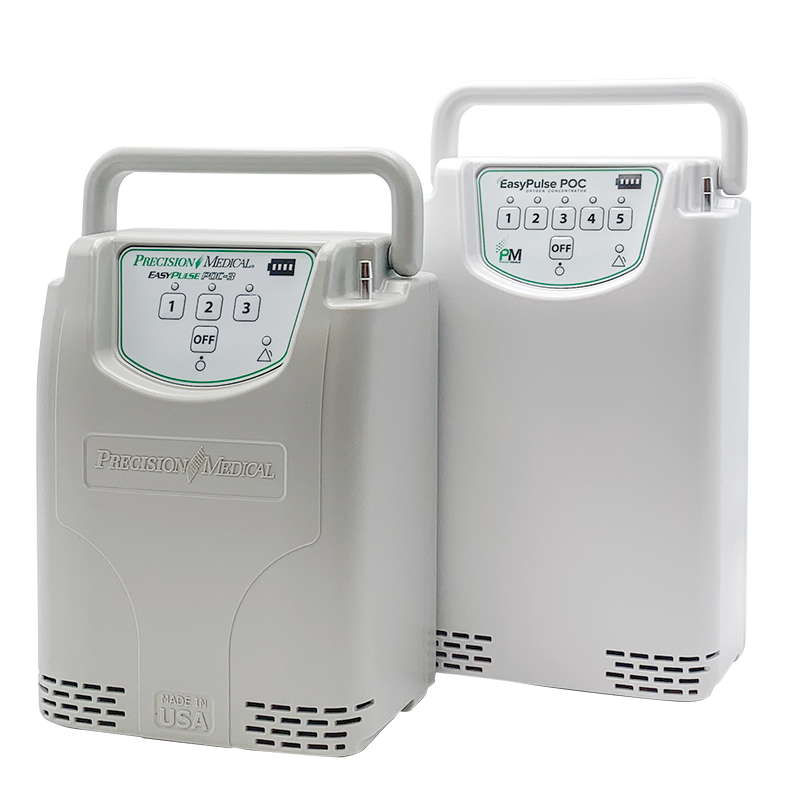Indicators on Portable Oxygen Concentrators You Need To Know
Wiki Article
Some Known Details About Portable Oxygen Concentrators
Table of ContentsPortable Oxygen Concentrators Things To Know Before You Get ThisThe Single Strategy To Use For Portable Oxygen ConcentratorsPortable Oxygen Concentrators Can Be Fun For AnyonePortable Oxygen Concentrators Can Be Fun For Everyone
Stationary oxygen concentrators were when the requirement, yet these containers could consider 50 extra pounds and were very troublesome (Portable Oxygen Concentrators). Now, portable oxygen concentrators get the work done, and they can fit into a bag or purse! The only thing you should bear in mind is that mobile concentrators have more restricted oxygen delivery capacitiesThere are 2 main sorts of mobile oxygen concentrators: pulse dose and constant flow. As the name suggests, pulse dose concentrators provide oxygen periodically, only turning on when you breathe in. This kind of device is typically suggested for COPD people with restricted oxygen demands, as the amount of O2 that a pulse dose concentrator can provide is relatively low.
This device can supply up to 3,000 m, L of oxygen every minute, while pulse dosage gadgets tend to cover out at 1250 m, L. Continuous circulation gadgets are the go-to for many COPD individuals, as they're perfect for individuals that require two to five liters of oxygen a min.
Now that you have this overview to the various types of portable oxygen machines, pick the best gadget with the aid of your doctor.
The 6-Second Trick For Portable Oxygen Concentrators
We realize Americans utilize residential versions in home care scenarios. We wondered how well these mobile oxygen concentrators would work in medical facilities. POC concentrators enhance the proportion of oxygen in ambient air people take a breath in, whenever they need a boost. Private-use ones are small adequate to carry about, and might help prevent the need to check out overloaded facilities and healthcare facilities.When it involves mobile oxygen therapy, there are two main options for distribution. These are mobile oxygen cyndrical tubes which contain pressed oxygen gas, or oxygen concentrators, which use a battery powered system to press and filter air, in order to create a constant supply of focused oxygen. In this blog post, AMS Compound Cylinders Technical Director, Tony Morrin, contrasts both, looking at the pros and disadvantages of each oxygen distribution system for NHS clinical oxygen users in terms of person autonomy.

Mobile Oxygen Concentrator Oxygen purity is constantly higher when supplied from cylinders it never goes down below 99. 6%, despite the flow price called for. In battery-powered concentrators, purity is impacted by circulation rate, and might be 90% or less, depending upon the devices. Whilst oxygen concentrators can be helpful for people that need a reduced circulation of oxygen, cyndrical tubes give higher concentrations that can be better for individuals with high flow requirements.
The Of Portable Oxygen Concentrators
Both systems need the webpage patient to lug about tools. For cylinders, this will consist of lugging a bag (and periodically a cart) and for portable oxygen concentrators this will certainly consist of the bag, trolley and power charger. Weight sensible, portable oxygen concentrators can be equivalent in weight, or often, lighter than conventional aluminium cyndrical tube systems.
They will need to improve substantially if they are to supply the same level of efficiency as similar composite cylinders. Oxygen constantly lugs a security threat. On one hand, ought to cylinders spring a leakage, they can create an oxygen rich environment that might cause an increase in fire threat.

The distinction is that there are considerable in advance costs to buying a mobile oxygen concentrator, yet reduced running costs using cyndrical tubes makes it possible for the purchaser to spread the expense over an extensive amount of time. One minor disadvantage of a mobile oxygen concentrator is the noise portable systems make a significant amount of noise throughout operation, which many patients locate disruptive.
Some Known Details About Portable Oxygen Concentrators

Our high-grade carbon composite cylinders use high stress (300 Bar), reduced weight, and NLL (Non-Limited Life) efficiency, and are approved for use worldwide. Further info about AMS Composite Cylinders Ltd can be found at .
Oxygen concentrators are created with individual flexibility in mind. Whether it's a desktop computer version for home use or a smaller, lightweight version for on-the-go, these tools allow patients to relocate openly without being connected to a fixed system. Particularly for the ones specifically developed for portability, individuals can carry them about, assisting in travel and everyday tasks with ease.
Among the significant comforts of making look here use of an oxygen concentrator is the removal of the regular requirement to replenish oxygen tanks. This not just decreases the logistical difficulties and reoccurring costs connected with refills however also guarantees that the user has a more foreseeable and constant source of oxygen. Oxygen concentrators are designed to fit perfectly right into the home setting.
Report this wiki page